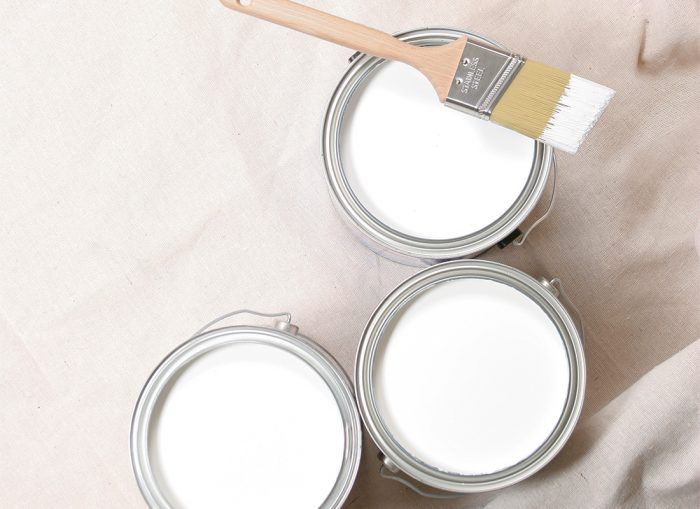What’s the Difference: Primers
Learn the difference between latex, oil-based, and shellac-based primers and how to choose the right one for the job.

For most paint jobs, both inside and outside the house, latex paint is preferred. Latex emits fewer odors and VOCs than oil-based paint, and it cleans up much more easily. In one area, however, oil-based products still hold their own over latex: primers. With interior applications and exterior spot-priming, there’s another option: shellac-based primers. All three primers can be used under latex topcoats. Choose a primer based on the condition of the substrate to be primed and its location. Before you open the can, though, be sure to prep the surface you’ll be priming. No primer will perform its best if the surface hasn’t been thoroughly scraped, sanded, or otherwise readied for painting.
Latex
Latex primers bond well with new wood or with old wood that has been sanded and is in good condition. They remain flexible after drying, which allows them to move with exterior wood during expansion and contraction. Latex primers are formulated to leave a smooth film on a smooth surface. However, that film won’t develop properly if the temperature is below 50°F or above 90°F. Latex primers don’t perform as well on weathered or damaged wood. They also don’t block knots or the tannins in cedar and redwood, and they raise wood grain more than oil-based or shellac-based primers. Cleanup is with water.
Cost per gallon: $14 to $23
Oil-Based
Oil-based primers are better than latex primers at sealing nail heads, covering knots in bare wood, and blocking tannin bleeding and other stains. They are also better for sealing bare window muntins that will be covered with oil-based window putty. Oil-based primers penetrate wood more thoroughly than latex primers, making them better at preparing weathered wood for paint. The best penetration is achieved by a slow-drying primer, but the trade-off is a longer wait before topcoating. When speed is more important than degree of penetration, oil-based primers that can be topcoated in one to two hours are available. Oil-based primers continue to harden as they age, which can be a problem with exterior applications. As the wood underneath expands and contracts, the primer remains rigid, weakening the bond with the wood and with the topcoat. Cleanup is with mineral spirits.
Cost per gallons: $17 to $23
Shellac-Based
Because the solvent in shellac-based primers is denatured alcohol, these primers kill the bacteria that cause certain odors. They are also great at covering knots and heavy stains. “If we have a problem stain from a knot bleeding through or a water stain that oil-based primer will not stop, then we turn to shellac-based primer,” says painter Philip Hansell. Because shellac softens in high temperatures, its use on exterior surfaces is limited to spot-priming. On the other end of the thermometer, shellac-based products are the only primers that can be applied in freezing temperatures. They don’t penetrate wood deeply, but are the fastest-drying primers available; a topcoat usually can be applied after 45 minutes. Cleanup is with denatured alcohol or ammoniated detergent.
Cost per gallon: $40 to $65





